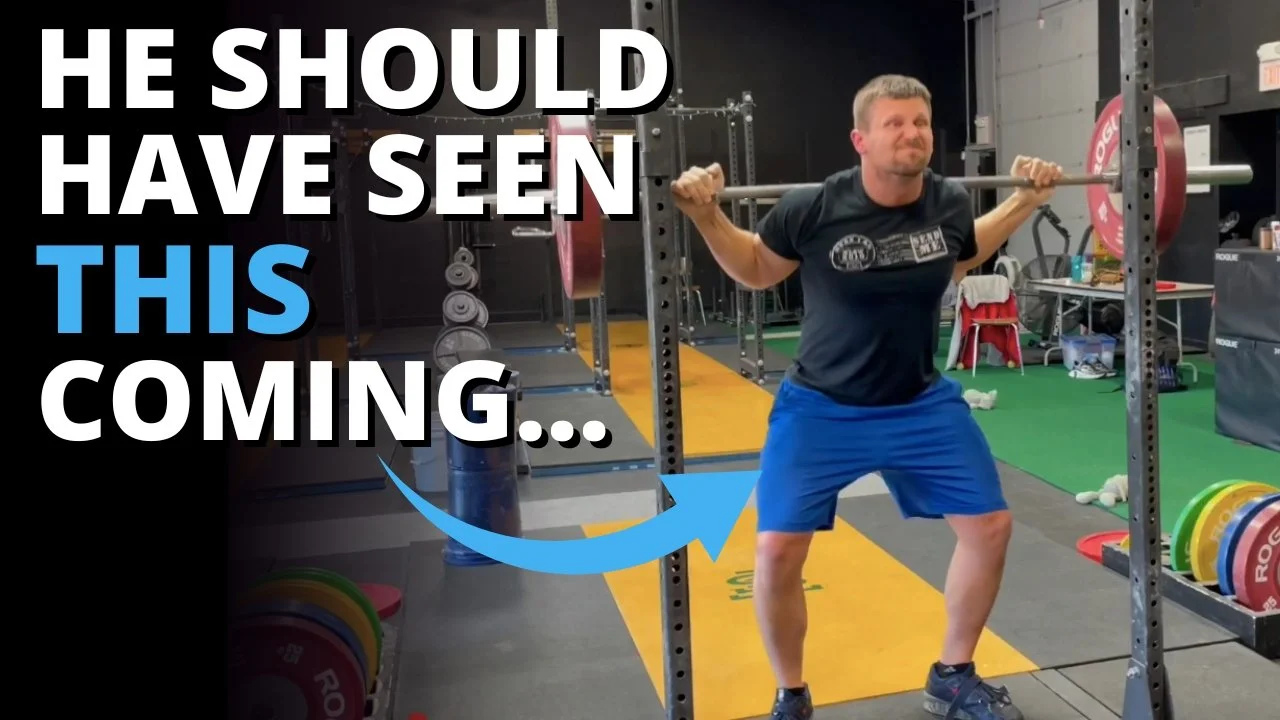One Clue to Identify a Bad Squat EARLY
/Don’t be like this fool.
Are you making your squat harder, weaker, and less efficient than it should be?
Here’s a tell-tale sign: if you’re trying to maintain a vertical torso (i.e., a vertical or upright back angle) as you descend, you’re making a mistake, so let’s fix it quickly.
The Problem
The error of trying to keep the torso upright during the descent of the squat is a common one, and it usually stems from confusing - whether consciously or subconsciously - the concept of a straight back with that of a vertical back.
Make no mistake - we want a straight back. We don’t want a rounded back (i.e., flexion), and we certainly don’t want an arched back (i.e., overextension) either. We simply want a straight, rigid back, which is extremely useful for efficiency of force transmission between you and the barbell.
However, the back will not always be - nor should it be - vertical during the squat itself. In fact, it won’t be vertical for most of the squat. Your back will be vertical at the start of the squat before you start your descent, and it will be vertical at the end of the squat when you finish standing up, but during the movement itself, the back will travel through a range of angles.
note that tyler has gotten correctly (and efficiently) leaned over as he descended into his squat.
The Solution
Trying to keep your torso vertical as you start makes the squat harder, weaker, less efficient, and even uncomfortable, and lifting heavy weights is already uncomfortable, so let’s not make the situation worse through inefficiency. To fix this issue, use the following cue as you start your descent:
“Hips back - chest down.”
As you begin the descent, reach your butt back as if you’re trying to touch the wall behind you while simultaneously pointing your chest down toward the floor. In other words, you lean over on purpose as you push your hips backward.
Using this leaned over position on the descent puts you in a stronger and more efficient position from which to drive up out of the bottom of the squat, and efficiency is always a good thing to have when squatting.
As always, we hope this helps you get stronger and live better.
-Phil
PS: Whenever you want even more Testify in your life, here are some free resources:
Book a free intro and strategy session with us HERE.
Pick up a free copy of Testify’s Squat Guide: 12 Tips to Improve Your Squat Now HERE.
Get our free weekly email - containing useful videos, articles, and training tips - HERE.
Follow Testify on Instagram HERE.
Subscribe to Testify’s YouTube channel HERE.
(Some links may be affiliate links. As an Amazon Associate, Testify earns from qualifying purchases.)




